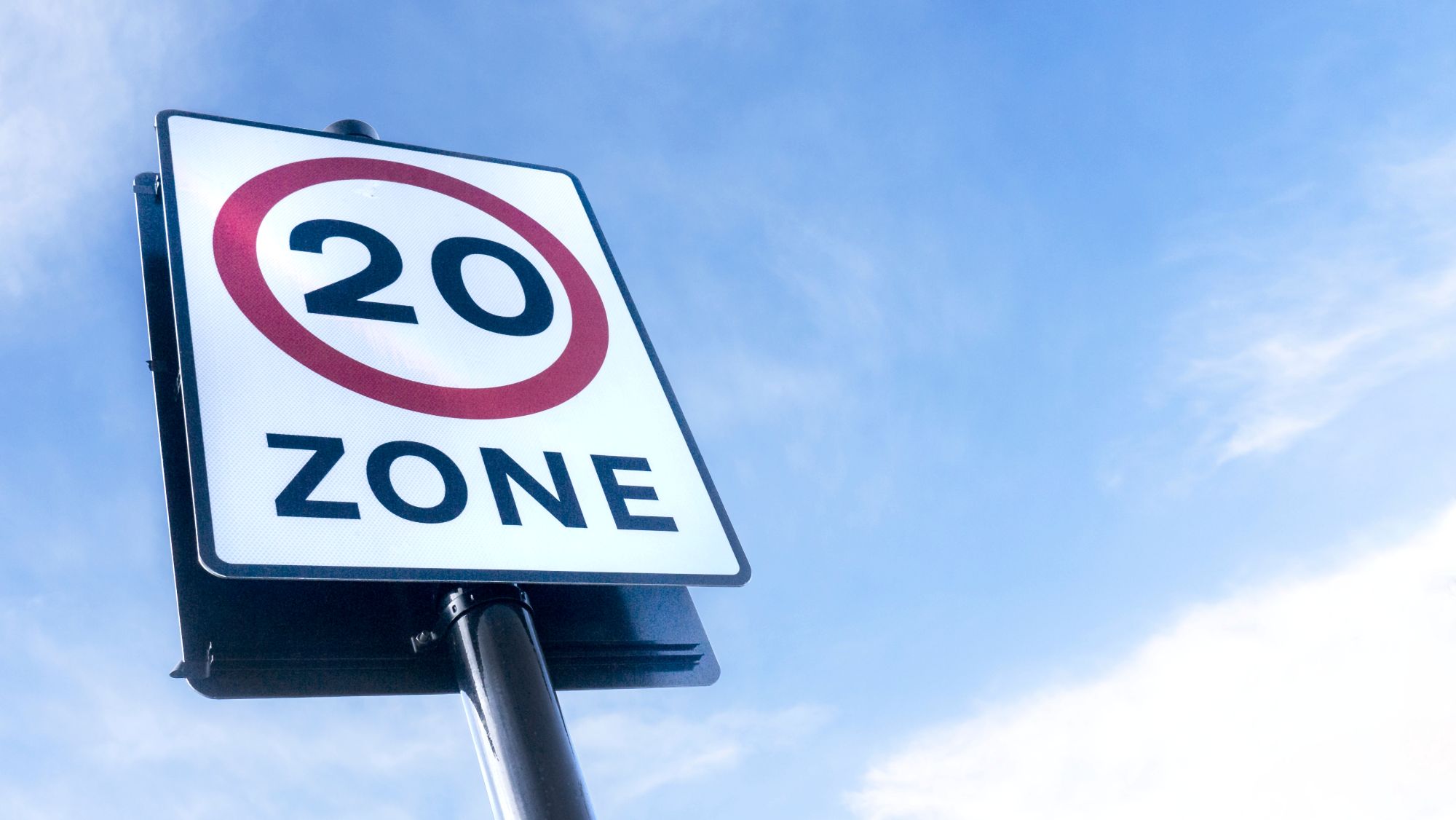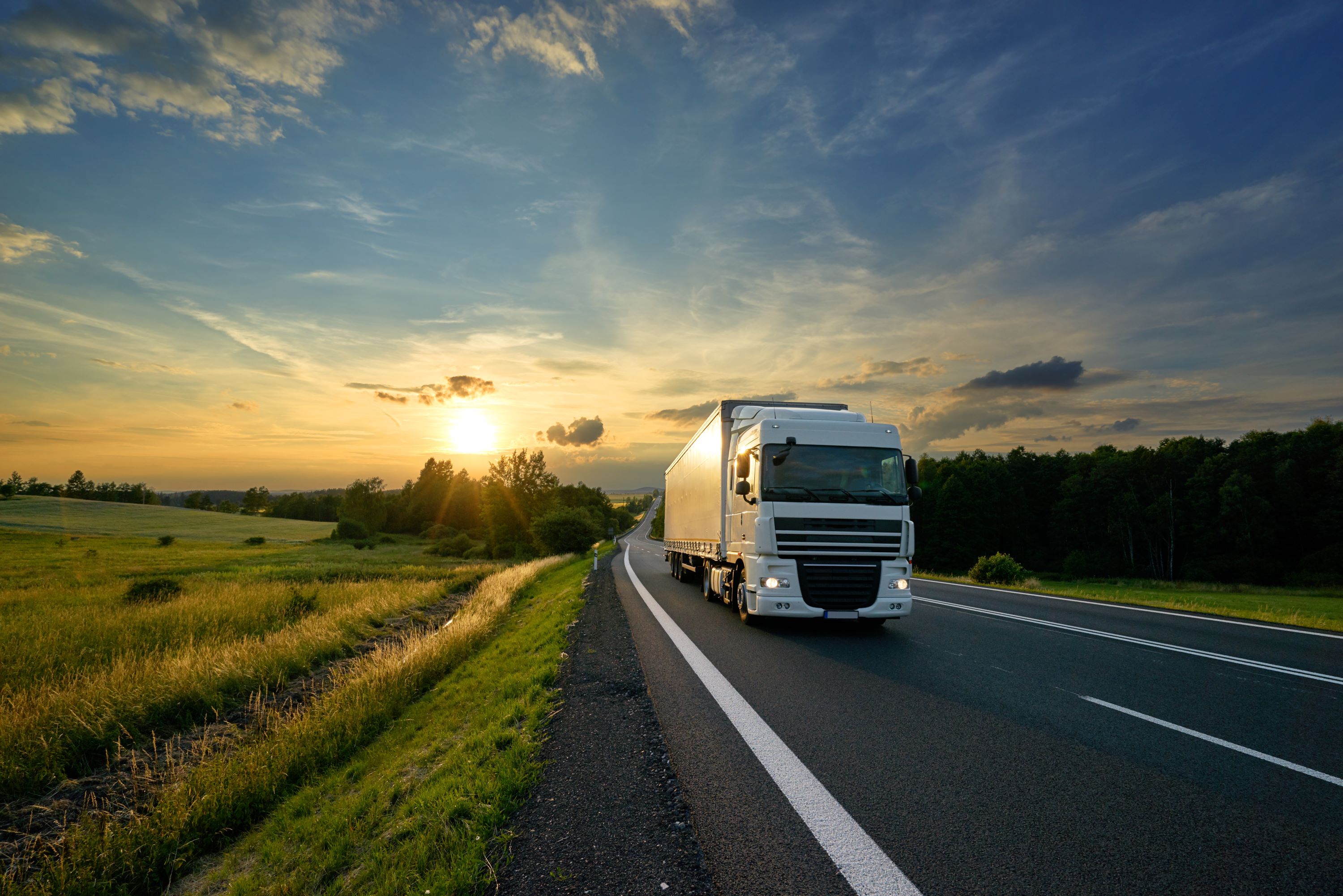
Susie Jones
¿Cuáles son las implicaciones de los límites de velocidad de 20 mph para las flotas?
Creado: 16/04/2025
•
Actualizado: 16/04/2025
En 2023, 188 vehículos pesados estuvieron implicados en colisiones con víctimas mortales, lo que supone un descenso respecto a 2022, pero no deja de ser una estadística preocupante. Estos accidentes pueden deberse a varios factores, como la fatiga del conductor, el mantenimiento deficiente del vehículo, las condiciones meteorológicas o las acciones de otros usuarios de la carretera. Sin embargo, los datos de la organización benéfica de seguridad vial Brake sugieren que el 58% de las muertes relacionadas con la carretera tenían la velocidad como factor de seguridad vial. En este blog, analizaremos cómo la implantación de límites de velocidad de 32 km/h podría repercutir en las operaciones de las flotas y reducir el número de víctimas mortales.
¿Dónde se producen los accidentes de camiones?
Según EROS, sólo el 10% de las colisiones de vehículos pesados se producen en autopistas; el 90% restante suelen ocurrir en vías urbanas o rurales. Las carreteras rurales ofrecen a los camioneros espacios estrechos, curvas cerradas e interacciones con usuarios vulnerables como ciclistas y peatones, lo que aumenta la probabilidad de accidentes. Las zonas urbanas suponen un mayor riesgo para los camioneros debido a la mayor densidad de tráfico, las paradas frecuentes, la actividad peatonal y el complejo trazado de las carreteras, lo que, combinado con la imprevisibilidad de las vías urbanas, las convierte en un peligro mayor para los camioneros.
El impacto de las zonas de 20 mph.
Las cifras publicadas por el Gobierno de Gales han mostrado 100 víctimas menos en las vías urbanas en 2024 en comparación con el mismo periodo en 2023 antes de que se aplicara el límite de velocidad de 20 mph en las zonas urbanas.
El plan cuenta con el apoyo de organizaciones como Brake y Cycling UK, y ahora los especialistas en gestión de flotas FleetCheck animan a las empresas de transporte a respaldarlo. Argumentan que el cambio de 30 a 20 mph tendrá un impacto mínimo en la eficiencia de la flota y refuerzan la idea de que salvaría vidas cada año.

¿Qué opinan las flotas y los conductores del límite de velocidad de 20 mph?
Según FleetCheck, los transportistas tienen sentimientos encontrados respecto a la iniciativa. Algunos veían los cambios como un obstáculo para la eficiencia, argumentando que los límites de velocidad más bajos pueden obligar a algunas flotas a reducir el número de entregas que pueden hacer en un periodo determinado.
En las páginas de SNAP en las redes sociales, los conductores se mostraron muy críticos con la propuesta. Un conductor comentó:
"¿Quién va a apoyar más zonas de 20 mph? El problema es el nivel de conducción. Desde que salimos del bloqueo, el nivel de conducción ha sido diabólico, incluyendo coches, furgonetas y camiones".
El sentimiento siguió siendo el mismo en las redes sociales, y muchos no apoyaron el cambio.
Las ventajas de más zonas de 20 mph.
Las zonas de velocidad reducida ofrecen varias ventajas a los camioneros.
Las velocidades más bajas mejoran los tiempos de reacción y reducen las distancias de frenado, lo que facilita evitar colisiones, sobre todo en zonas urbanas.
Los camiones tienen más probabilidades de sufrir menos desgaste con límites de velocidad reducidos.
Los obstáculos a los que podrían enfrentarse las empresas de flotas.
Como ya se ha mencionado, a algunas empresas de flotas les preocupa que unos límites de velocidad más bajos puedan reducir el número de entregas que pueden hacer en un periodo determinado. Las flotas también podrían enfrentarse a los siguientes retos:
Mayor duración de los trayectos:** que afecta a las entregas urgentes y repercute en la programación y las expectativas de los clientes.
Planificación de rutas:** es posible que las empresas tengan que ajustar las rutas para tener en cuenta las velocidades más bajas.
Cumplimiento:** será crucial invertir en formación adicional de los conductores para garantizar el cumplimiento de los nuevos límites de velocidad.
Aunque estas cuestiones pueden plantear retos adicionales a las empresas de flotas, muchas pueden gestionarse de forma proactiva. Muchos argumentarían que los beneficios a largo plazo para la seguridad superan los obstáculos.

Las cifras hablan por sí solas.
En una campaña revisada titulada Carreteras peligrosas, SNAP identificó los lugares más peligrosos de GB. Profundizamos para descubrir qué carreteras podrían beneficiarse de un límite de velocidad reducido.
SNAP descubrió que el sureste tenía las carreteras más peligrosas. Kent tiene las carreteras más peligrosas de Gran Bretaña y está proponiendo un objetivo de cero víctimas mortales en carretera en la Red de Carreteras de Kent para 2050. ¿Cuáles son las carreteras más preocupantes?
La A254: Una carretera corta de solo seis kilómetros pero que fue nombrada la ruta de mayor riesgo de Gran Bretaña en 2018. El informe destacó un tramo de la A254 entre el cruce de la A28 en Margate y el cruce con la A255 cerca de Ramsgate. El límite de velocidad en este tramo varía entre 30 mph y 40 mph - las zonas urbanizadas y un flujo de tráfico pesado desde el puerto de Dover hacen que esta carretera sea particularmente peligrosa para ciclistas, peatones y otros usuarios de la carretera. ¿Podría este tramo de carretera beneficiarse de límites de velocidad más lentos?
La A252: Notoria por sus altos índices de accidentes, la A252 recorre 8,7 millas. En 2020 se iniciaron las obras para reducir el número y la gravedad de los accidentes; entre los cambios, una disminución de 60 a 50 mph en este tramo, excepto donde están en vigor límites más bajos. Sin embargo, ¿es esto suficiente para sacudirse la reputación de la carretera como una de las peores de Gran Bretaña?
Surrey y Essex también encabezaron la lista y tuvieron un total combinado de 30.378 accidentes en los últimos cinco años. Los altos índices de siniestralidad de Surrey pueden atribuirse a su mezcla de ciudades pobladas y carreteras rurales. Su proximidad a Londres y a las principales autopistas ha provocado más colisiones.
La M25: También conocida como la autopista orbital de Londres, la M25 es una de las carreteras más transitadas de Gran Bretaña, a la vez que es la segunda circunvalación más larga de Europa. Entre 2007 y 2016, se registraron 7.673 accidentes y 80 víctimas mortales. Como autopista crucial, los ajustes de velocidad tan bajos como 20 mph serían ridículos. Sin embargo, ¿se beneficiaría la M25 de zonas de velocidad restringida?
A3:** Con una longitud de 67 millas, la A3 puede ser una carretera difícil de conducir debido a su elevado volumen de tráfico, límites de velocidad y tramos en mal estado.
Preguntas frecuentes
¿Cuál es el límite máximo de velocidad para los camiones?
Los conductores de camiones deben cumplir estrictas normas de velocidad. Estas restricciones tienen en cuenta el tamaño, el peso y la capacidad de frenado de los camiones.
Un camión de más de 7,5 toneladas está limitado a una velocidad máxima de 80 km/h.
Carreteras de doble sentido:** 60 mph es el límite máximo de velocidad para un camión de más de 7,5 toneladas.
Autopistas:** Los conductores de camiones no deben superar los 100 km/h en autopista.
Normativa sobre limitadores de velocidad en el Reino Unido*. En el Reino Unido, es obligatorio instalar dispositivos limitadores de velocidad en cualquier camión para limitar la velocidad máxima a la que puede circular el vehículo.
Requisitos legales en el Reino Unido:** Todos los camiones de más de 3,5 toneladas deben tener un limitador de velocidad fijado en 56 mph.
Cómo funcionan:** Los limitadores de velocidad limitan el combustible suministrado al motor una vez que el vehículo alcanza una velocidad preestablecida, garantizando que los conductores no puedan sobrepasar el límite.
¿Necesita un limitador de velocidad un camión particular?
Los camiones particulares no necesitan limitador de velocidad a menos que se utilicen con fines comerciales. Debe declarar si su vehículo está exento de necesitar un limitador de velocidad cuando lo lleve a pasar la ITV rellenando un formulario de declaración de limitador de velocidad.



